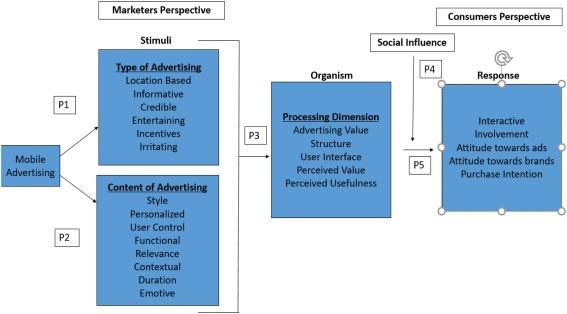Global Impact: How International Collaborations Are Shaping Educational Technology Innovation
in the ever-connected digital era, educational technology (edtech) is no longer bounded by geography. The power of international collaborations is transforming edtech innovation, driving advancements in learning environments worldwide. This article will explore how global partnerships foster creativity, support equitable access, and accelerate the advancement of cutting-edge tools in education.
Why International collaborations Matter in EdTech
As educational institutions and technology providers look beyond borders, the synergy created by global edtech partnerships is shaping the future of learning. Connecting diverse minds promotes the sharing of resources, ideas, and expertise, tackling common educational challenges wiht innovative approaches.
key Benefits of international Collaborations in Educational Technology
- Diverse Perspectives: Teams from multiple countries bring a spectrum of experiences and viewpoints, fueling creative edtech solutions.
- Resource Sharing: Access to international funding, research, and infrastructure accelerates technology adoption.
- Scalable Solutions: Tools and platforms developed in partnership are more adaptable across various educational settings.
- Improved accessibility: Expanding reach to underserved populations worldwide by leveraging local expertise and global resources.
How global Partnerships Drive Educational Technology Innovation
Educational technology innovation thrives on collaboration,drawing strength from cross-border projects and joint ventures. there are several ways in which international teamwork is shaping the edtech landscape:
1. Collaborative Research Initiatives
International research groups facilitate the sharing of data and best practices. Examples include the OECD’s Going Digital in Education initiative, connecting policymakers and edtech researchers from over 30 countries to reimagine digital learning experiences.
2. Joint Development of Educational Platforms
Edtech companies and universities across continents collaborate to create adaptable content and learning management systems (LMS). For example, platforms like Coursera and edX harness the expertise of institutions like MIT, Stanford, and the University of london, offering courses to millions of learners globally.
3. International Pilot Programs
Global pilot projects allow educational tools to be tested in diverse settings—yielding insights that shape product design. UNESCO’s Mobile Learning Week regularly showcases prosperous pilots that utilize mobile devices to increase access to education in remote regions.
4. Cross-Border Professional Development
Teachers and trainers gain updated skills through programs like the British Council’s Connecting Classrooms initiative, which unites educators from different countries to share pedagogical techniques and edtech solutions.
5. Policy Alignment and Standards
By working together, ministries of education and technology providers establish international standards for interoperability, data privacy, and accessibility. This streamlines the integration of edtech across national boundaries.
Case Studies: Successful Models of International EdTech Collaboration
Case Study 1: erasmus+ Virtual Exchange
the Erasmus+ Virtual Exchange program connects students across Europe through digital classrooms, virtual debates, and intercultural learning projects. By fostering partnerships between universities in more than 44 countries, the initiative enhances digital literacy, critical thinking, and global citizenship—all empowered by edtech.
Case Study 2: UNESCO and Microsoft Partnership
UNESCO and Microsoft joined forces to deliver the Global Education Coalition at the start of the COVID-19 pandemic.Their efforts quickly equipped millions of learners and teachers with digital tools, resources, and remote learning solutions, particularly in low-income countries. This massive collaboration highlighted the scalability and effectiveness of globally coordinated edtech responses.
Case Study 3: Global Learning xprize
The Global Learning XPrize was an international competition challenging teams to develop open-source, scalable software that provides children in sub-Saharan Africa with basic reading, writing, and arithmetic skills. Team collaborations from around the world resulted in several apps now adopted in different countries, demonstrating the direct impact of international edtech innovation on literacy.
First-Hand Experiences: Voices from EdTech Collaborators
“Working with our partners in Asia and Africa allowed us to understand the unique challenges and strengths of each region. Through shared knowledge, we developed an adaptive learning app now used in over 15 countries.”
– Samira, EdTech Project Lead, Europe
“International collaboration opened doors for professional growth. Together, we created teacher training modules that accommodate diverse pedagogical traditions and technological infrastructures.”
– Juan, Educational Technologist, Latin America
Practical Tips for fostering International EdTech Collaboration
- Attend Global Conferences: Events like ISTE, BETT, and EduTECH offer networking and partnership opportunities.
- Use Cloud-Based tools: Platforms such as Slack, Zoom, and Microsoft Teams facilitate seamless cross-border communication.
- Leverage Open-Source Technologies: Open learning platforms support customization and collaboration without geographical limits.
- Develop Multilingual Resources: Support learners and educators across regions by providing content in multiple languages.
- Prioritize Cultural Sensitivity: Design educational solutions with local customs and needs in mind to ensure adoption and effectiveness.
Challenges and Solutions in International EdTech Cooperation
While international collaborations drive remarkable progress, they are not without obstacles:
- Time Zone Differences: Addressed through asynchronous communication and flexible meeting schedules.
- Regulatory Barriers: Navigated by understanding local laws and collaborating with in-country stakeholders.
- Language and Cultural gaps: Overcome with multilingual teams and inclusive design approaches.
- Data Privacy Concerns: Tackled by adhering to global standards like GDPR, FERPA, or COPPA.
The Future of Global EdTech Innovation
The momentum behind international educational technology collaborations continues to grow. Artificial intelligence, extended reality, and advanced analytics are making personalized and scalable learning experiences more accessible worldwide. As new partnerships emerge, the potential for impact multiplies—bringing quality education to all, regardless of location or background.
Conclusion: Uniting for a Smarter Tomorrow
International collaborations in educational technology are unlocking unprecedented opportunities for learners, educators, and innovators globally. By sharing insights, resources, and creativity, these partnerships propel education into new realms—bridging divides and nurturing the skills needed for a rapidly changing world. For edtech companies, institutions, and policymakers, embracing global teamwork isn’t just beneficial—it’s essential for building robust, equitable, and adaptive learning ecosystems.
Ready to transform education through international collaboration? Start networking, explore cross-border projects, and be a part of the global edtech movement that’s shaping our collective future.

